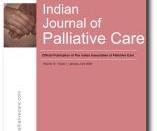Introduction
There is agreement that patients with life-threatening illnesses, including progressive malignancies, need appropriate therapy and treatment throughout the course of illness. At one stage, therapy is directed toward assessment and intervention in order to control and/or to cure such illness and alleviate associated symptoms. For some persons, however, the time comes when cure and remission are beyond current medical expertise. It is then that the intervention must shift to what is now often termed 'palliative treatment,' which is designed to control pain in the broadest sense and provide personal support for patients and family during the terminal phase of illness. In general, palliative care requires limited use of apparatus and technology, extensive personal care, and an ordering of the physical and social environment to be therapeutic in itself.
There are, as it were, two complementary systems of treatment which may often overlap: One system is concerned with eliminating a curable disease and the other with relieving the symptoms resulting from the relentless progress of an incurable illness.
There must be openness, interchange, and overlap between the two systems so that the patient receives continuous appropriate care. The patient should not be subjected to aggressive treatment that offers no hope of being effective in curing or controlling the disease and may only cause further distress. Obviously, the clinician must be on the alert for any shifts that may occur in the course of a terminal illness, which make the patient again a candidate for active treatment.
Patients suffer not only from inappropriate active care, but also from inept terminal care. This is well documented by studies that only confirm what dying patients and their families know at first hand.
These principles have been prepared as an aid to those who have initiated or are planning programs for the...


